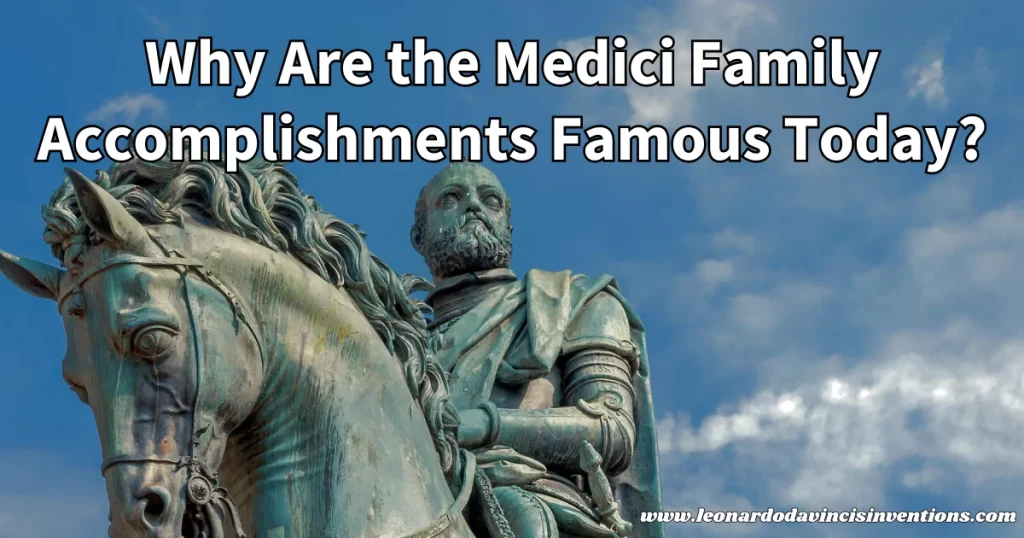
Medici family accomplishments may seem distant, but they continue to shape the world today. If you have ever wondered why the Medici name remains a topic of discussion centuries later, this article will explore how their legacy continues to influence art, culture, and politics.
The Medici family is renowned for their support of artists, architects, and thinkers, which played a crucial role in shaping the Renaissance and laying the groundwork for modern Europe.
By examining how the Medici influenced banking, government, and culture, you can understand why their story remains relevant. Get ready to discover how the actions of one family from Florence changed history and why people still celebrate their remarkable achievements.
The Rise of the Medici Family and Their Political Power in Renaissance Florence
The Medici family rose to power in Florence, leveraging banking innovations to accumulate wealth and exert political influence. Through alliances and cultural patronage, they shaped Renaissance Florence and left a mark on European society.
The Origins of the Medici Family Banking Dynasty in Florence
The Medici family started as merchants in Florence but soon found greater success in banking. Giovanni di Bicci de’ Medici founded the Medici Bank in the late 1300s.
This bank introduced new methods, like double-entry bookkeeping, that made banking safer and more profitable. Giovanni expanded the Medici family’s economic power by lending money to powerful clients, including the Pope.
The bank quickly opened branches in other major cities. With wealth flowing in, the family had a significant influence on Florence’s social and political life.
How Cosimo de’ Medici Established Wealth and Influence
Cosimo de Medici took control of the Medici Bank after his father’s death, making the family the richest in Florence.
Cosimo used his wealth to shape the city and strengthen his political power. He supported numerous art commissions, sponsoring artists such as Donatello and contributing to the construction of important landmarks in Florence.
Cosimo’s patronage of the arts and architecture is evident in buildings such as the Medici Palace and the San Lorenzo Church. He used his influence to gain support from the people and other powerful families.
Cosimo’s leadership marked the beginning of the Medici family rule in Florence.
Lorenzo de’ Medici’s Role in the Medici Family Political Alliances
Lorenzo de’ Medici, known as “Lorenzo the Magnificent,” led the Medici family during the Renaissance’s height. He formed political alliances with other key Italian states and rulers through diplomatic means and strategic marriages.
These alliances protected Florence from external threats and helped maintain the Medici family’s power. Lorenzo’s leadership also fostered a culture of innovation.
He supported famous artists, including Michelangelo and Leonardo da Vinci, and brought together writers and thinkers at his court. Because he supported the arts and education, Florence became a center for new ideas and creative work.
Lorenzo’s strategy of building strong ties with others and sponsoring culture allowed the Medici legacy to continue for generations.
Medici Family Rule and the Florence Republic’s Transformation
The Medici family transformed Florence from a republic into a city ruled by a single family. Although Florence kept its republican name, the Medici used their economic power, friendships, and wealth to control decisions behind closed doors.
They placed their supporters in key government roles and made deals that kept rivals at bay. This way of ruling helped maintain peace and order in Florence.
However, it also made the government less open, giving the Medici nearly complete control. The Medici family’s control marked the city’s transition into a cultural and political powerhouse.
The Medici Pope and the Family’s Influence on the Catholic Church
The Medici family produced several popes, including Pope Leo X and Pope Clement VII. These Medici popes leveraged their position to benefit their relatives and enhance the family’s influence across Europe.
With a Medici on the papal throne, Florence gained more power in religious and political matters. The family’s close connection to the Catholic Church allowed them to direct church spending toward art and architecture in Florence.
Medici patronage enabled churches and artists to complete major projects, shaping the city’s religious life.
Medici Family Contributions to Art, Culture, and Innovation
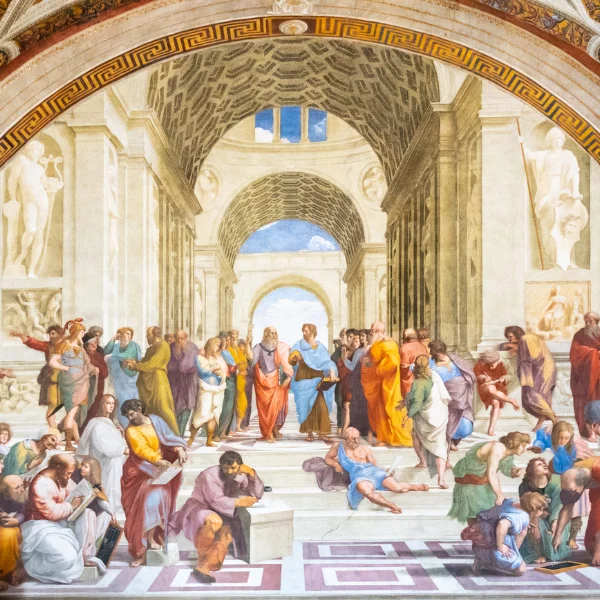
The Medici family played a pivotal role in shaping the Renaissance by supporting top artists, revolutionizing banking, and promoting cultural advancement. Their role in the rise of Florence as a center for art and learning made their name well-known worldwide.
Patronage of the Arts: Medici Family Support for Michelangelo and Leonardo da Vinci
The Medici family was a significant patron of major artists, including Michelangelo and Leonardo da Vinci. Cosimo de’ Medici and Lorenzo de’ Medici provided these artists with financial security and a community where they could flourish.
Their support allowed Michelangelo to sculpt masterpieces and Leonardo to work on paintings, inventions, and scientific studies. Both artists received direct commissions and lived under the protection of the Medici family in Florence.
This support provided them with the time and resources to focus on their art and science. Many landmark works from the era would not exist without the Medici patronage.
The family’s close ties with the arts show how their wealth and influence shaped creative achievements during the Renaissance.
Artistic Sponsorship and Medici Family Art Commissions
Medici artistic sponsorship set a standard for art funding in Renaissance Florence. They regularly commissioned well-known painters, sculptors, and architects.
Such artists included Sandro Botticelli, who painted “The Birth of Venus” for the Medici, and Donatello, whose sculptures decorated Medici-controlled public spaces. These commissions helped create a demand for high-quality art in Florence, turning the city into a cultural hub.
Due to the Medici’s art commissions, new techniques and styles spread rapidly among local artists. Their patronage of the arts remains a key reason their accomplishments continue to be studied and admired.
Architecture and Medici Family Architecture Projects in Tuscany
In architecture, the Medici family transformed Florence and Tuscany through large building projects. They financed structures like the Medici Palace, renowned for its distinctive style and robust design.
Supported by the Medici, Filippo Brunelleschi constructed the renowned dome of Florence Cathedral—a symbol of both religious faith and technical skill.
Table: Notable Medici Architecture Projects
| Project | Architect | Location |
|---|---|---|
| Medici Palace (Palazzo Medici) | Michelozzo di Bartolomeo | Florence |
| Dome of Florence Cathedral | Filippo Brunelleschi | Florence |
| Medici Chapel | Michelangelo | Florence |
These projects inspired other cities in Tuscany to build and innovate. They led to regional cultural growth and visible reminders of the Medici legacy.
The Medici Family Art Collection and Its Lasting Cultural Prosperity
The Medici family art collection became one of the most important in Europe. It included paintings, sculptures, manuscripts, coins, and rare books.
Many pieces collected by the Medici family members are now housed in the Uffizi Gallery. This collection served as a symbol of wealth, a means to share knowledge, and an inspiration to future artists.
Their collection helped foster the growth of museums and established Florence as a hub for exchanging artistic ideas. Because the Medici legacy included public access to their art, their cultural impact lasted much longer than their political dynasty.
How the Medici Family Philanthropy Fostered Renaissance Florence’s Cultural Growth
Medici family philanthropy went beyond the arts. They funded libraries, schools, and academies, helping to educate young Florentines.
Cosimo de’ Medici supported the Platonic Academy, which led to significant advances in philosophy and humanism. These acts of giving significantly improved the lives of many people in Florence, not just the wealthy.
Their support for education and culture made Renaissance Florence a beacon of learning and culture. Investments in social projects, art, and public buildings tied their family name to cultural prosperity and the growth of ideas throughout Tuscany.
The Medici Family Legacy in Banking, Education, and Politics
The Medici family established its legacy in Florence through innovations in banking, artistic patronage, and political influence. Their influence profoundly reshaped Tuscany’s culture, education, and governance, particularly during the Renaissance.
Medici Bank Innovations and the Rise of Economic Power
Medici family accomplishments began with the creation of the Medici Bank, which became one of the most powerful banks in Europe. The bank introduced new accounting methods and letters of credit, making banking safer and more reliable.
These changes attracted business from kingdoms and the Catholic Church. The Medici family’s work as a banking dynasty gave them massive wealth and influence.
This helped them fund grand projects and shape the future of Renaissance Florence. Supporting trade and lending allowed Florence to thrive as a center of commerce and ideas.
The Medici legacy in banking remains a subject of study today, as their methods significantly influenced the development of modern finance. Learn more about how the Medici family shaped modern finance in this in-depth Medici family banking history.
Medici Family Influence on Politics and Medici Family Power Struggles
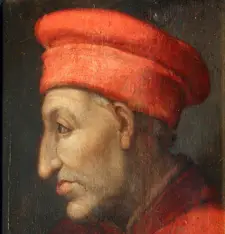
Political power was another key to the Medici family’s story. The family won positions of influence in Florence and other city-states through strategic marriages and careful alliances.
Cosimo de’ Medici was the first to control Florence behind the scenes, setting a path for later leaders like Lorenzo de’ Medici. Rival families and political groups often challenged their rule.
Intense power struggles sometimes led to violence, plots, or forced exiles. Despite this, the Medicis established a political dynasty that endured for centuries, producing several popes, one of their most notable examples of their influence.
Medici Family Support for Art and Science: Education and Literature
The Medici family’s patronage of the arts is one of their most lasting contributions. They supported artists and thinkers like Michelangelo, Leonardo da Vinci, and Botticelli.
Their funding allowed these artists to create masterpieces that shaped the Renaissance. The Medici also invested in education by founding libraries and academies.
They promoted science and literature by supporting scholars, making Florence a center of learning and creativity.
Medici Family Diplomacy and Political Dynasty Across Tuscany
Diplomacy played a key role in the Medici’s rule over Tuscany. The family formed alliances with powerful states and families in Italy and beyond.
These relationships protected Florence’s interests and expanded Medici influence. Several members of the Medici family became Grand Dukes of Tuscany, thereby extending their influence across the region.
Their diplomatic skills made them a respected and sometimes feared political dynasty in Renaissance Europe. They maintained power through careful negotiation and, at times, military strength.
The Medici Family’s Rise and Fall and Its Impact on the Medici Legacy
The Medici family’s rise and fall changed both Florence and Italy. As their wealth increased, so did criticism and rivalry.
Internal conflicts and shifting politics led to periods of exile and instability. Strong leadership sometimes restored their power, but it was never certain.
Renaissance Florence still shows the mark of Medici architecture, art collections, and reforms. Their history remains central to understanding the era’s wealth and struggles for power.
Frequently Asked Questions
The Medici family supported artists, influenced politics, and played a significant role in shaping the Renaissance. Their wealth, leadership, and connections made them a powerful house in Florence and Europe.
What did the Medici family accomplish?
The Medici became one of the most influential families in Italy. They supported artists like Leonardo da Vinci and Michelangelo.
Their patronage helped create some of the key works of Renaissance art and architecture. They also built banks and held political control in Florence for generations.
How did the Medici change the world?
The Medici helped Florence become a cultural and intellectual center. Their investments in art and science led to significant advancements.
The Medici played a major role in starting the Renaissance era by funding thinkers, artists, and architects. This period had a profound and lasting impact on all of Europe.
Why were the Medici so successful?
The Medici became wealthy through banking. They established a network of businesses that generated substantial revenue and influence.
They used this wealth to gain political power and form strong alliances with popes and royalty.
Who was the most successful Medici?
Lorenzo de’ Medici, also called “Lorenzo the Magnificent,” was well known. He governed Florence and led the city during its golden age.
Lorenzo supported artists and scholars and was an important political leader.
Why is the Medici family still important today?
The Medici family’s impact on art, politics, and culture is still felt. Renaissance works they sponsored remain important to historians, artists, and the public.
Their influence helped shape modern banking, government, and ideas about leadership. Their cultural legacy continues to inspire new generations.
Who was the most powerful family in Italy?
During the Renaissance, the Medici family was widely seen as the most powerful family in Italy. Their wealth and political connections gave them unmatched influence.
Other strong families existed, but the Medici shaped Florence and, at times, European events.
What was the downfall of the Medici family?
The Medici lost power as other families in Florence gained influence. Economic problems, political struggles, and a lack of direct heirs sometimes weakened them.
Their rule came to an end in the 18th century, marking the demise of their dynasty.
Are there any Medicis alive today?
The main Medici family line died out in the 1700s. Some distant relatives may still exist.
However, no members have the same wealth or power as their famous ancestors.
What gave the Medici family so much power?
Their early success came from running one of Europe’s largest banks.
They invested their money in politics, art, and influential marriages. These moves strengthened their position in Florence and enabled them to influence key European decisions.
What is the Medici Palace used for today?
The Medici Palace, also known as Palazzo Medici Riccardi, is a renowned museum in Florence.
Visitors can tour its historic rooms and view art collections.
They can also learn about the family’s history.
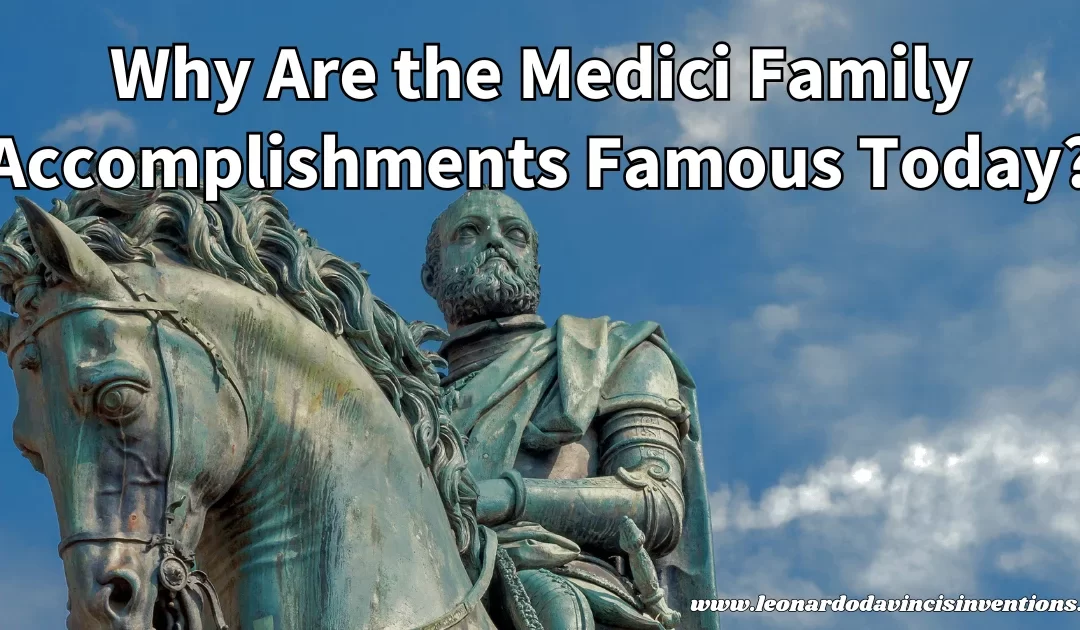
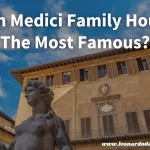
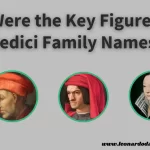
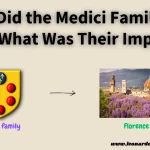
 Leonardo Bianchi,
the creator of Leonardo da Vinci's Inventions.
Thank you for visiting
Leonardo Bianchi,
the creator of Leonardo da Vinci's Inventions.
Thank you for visiting